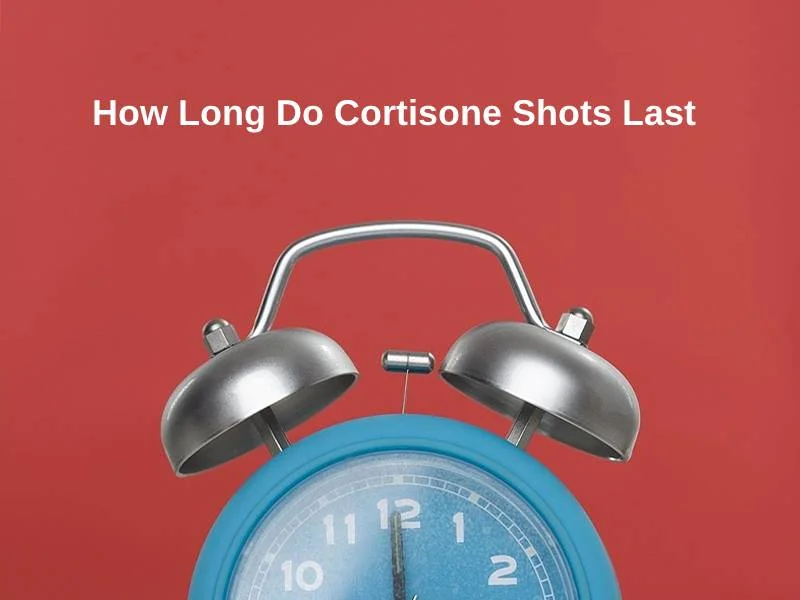Exact Answer: 6 Weeks To 6 Months
Cortisone injections are available to treat arthritis and tendonitis. Diseases of joints and tendons produce inflammation. This inflammation makes joints and tendons painful and activities difficult. Hence, one may use a cortisone shot to help with the treatment.
However, a cortisone shot is only temporary. Generally, a cortisone shot can not cure arthritis or tendonitis. It will only reduce pain, making the patient feel better.

How Long Do Cortisone Shots Last?
| Type Of Cortisone Shot | Time it lasts |
| Articular or joint injections | Three months |
| Trigger point injections | Three months |
| Epidural steroid injections | Three months to one year |
Known how long a cortisone shot lasts can help patients plan their injections. Choosing the right time to have a cortisone shot could be the difference between success and failure.
Generally, a cortisone shot takes four to five days to start working. This shot can last anywhere from 6 weeks to 6 months. However, its effects are temporary. Nevertheless, this window of pain relief can help with rehab. One must remember that they must take rest to prevent flare-ups.
There are three types of cortisone shots- articular or joint injections, trigger point injections and epidural steroid injections.
One gets articular or joint injections in the knee, ankle, shoulder, and small joints of the hand and foot. These injections last for three months. However, they need to be followed by a booster injection 2 to 4 weeks later.
One gets a trigger point injection into the bursa surrounding joints such as the shoulder, knee, or hip. These injections also need a booster shot in 2 to 4 weeks and last for about three months.
An epidural steroid injection is inside the bony column of the spinal cord surrounding the dura, the sac that contains the spinal cord and spinal nerves. There are two types- a lumbar epidural shot and a cervical epidural injection.
A lumbar epidural shot is a simple technique. The patient does not face any side effects other than a headache. A cervical one, on the other hand, is a very specialized process. The patient may have some side effects.
Both these injections last for at least three months. However, they may last up to a year, especially if treating back pain.
One can have multiple shots in a particular location 6 to 8 weeks after the first one. However, one must not have more than two shots at the same point. Instead, one can have multiple cortisone shots in different parts of the body.
Why Do Cortisone Shots Last So Long?
As an orthopedic treatment, cortisone is injected directly into a site of inflammation. Cortisone is an anti-inflammatory steroid that works by stoping collagen production. The injection stops collagen production in the tendon or joint. Thus, the inflammation subsides, which calms nerves, indirectly reducing pain.
Although this process begins immediately after the injection, it requires time for it to work thoroughly. That is why patients experience a gradual relief in pain.
Moreover, like all drugs, cortisone has a half-life that dictates how long it will last in the body. Hence, depending on its concentration, cortisone may last six weeks to six months as higher concentrations remain in the body for longer. For example, local injections at low doses last for only six weeks, while an epidural steroid shot lasts for up to a year.
One may further increase the duration of pain relief by coupling cortisone with lifestyle changes like proper footwear and appropriate exercise.
Conclusion
Cortisone begins to work immediately after injection. However, patients felt a reduction in pain over time. One can further enhance the treatment by coupling it with lifestyle changes.
Depending on the type of injection, the duration for which cortisone lasts in the system changes. At the most, a cortisone injection lasts for three months to one year.
Overall, this is an effective treatment for joint pain in the shoulder, knee, ankle, back, hip and hands.